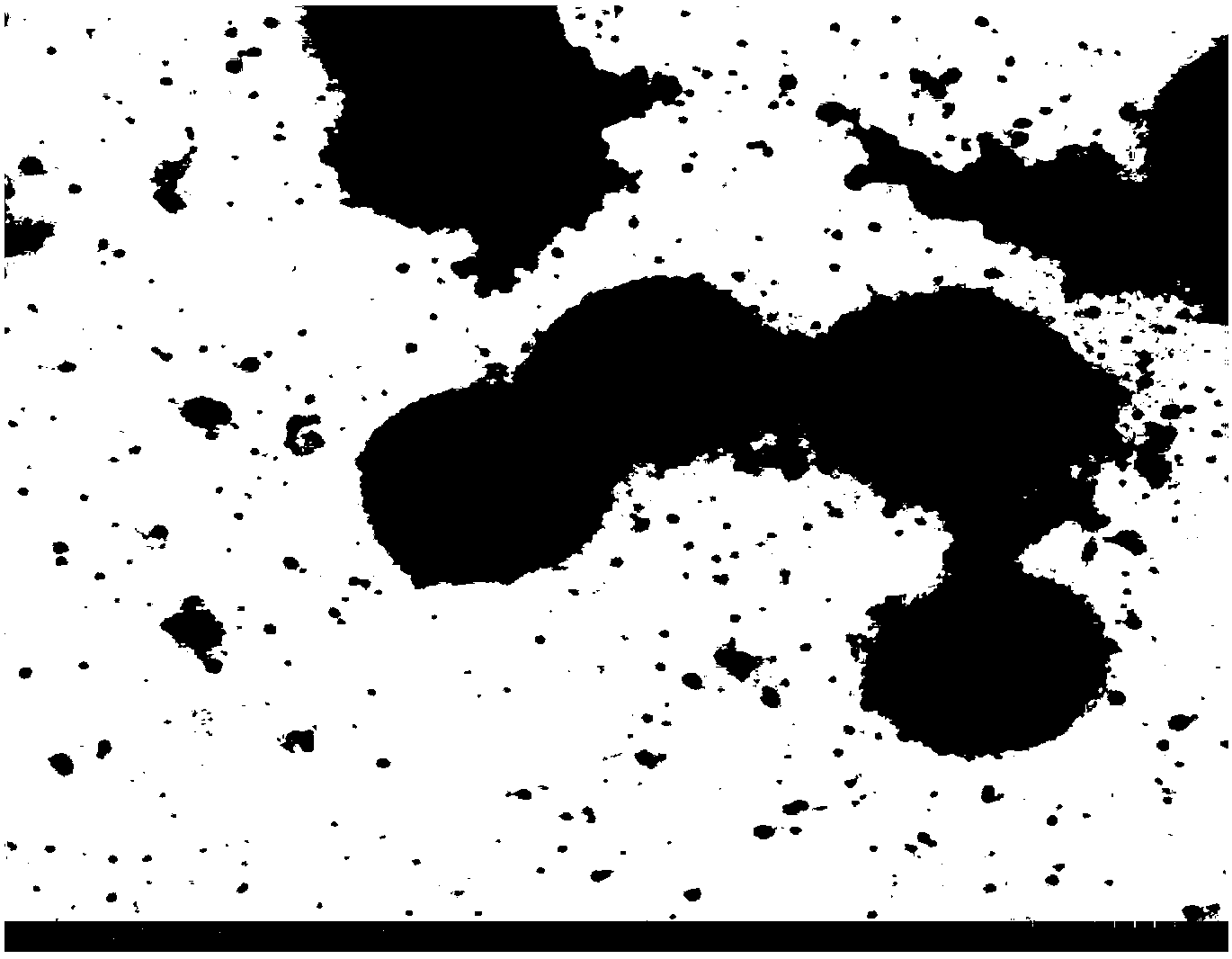Aliphatic group-grafted low molecular weight polyethyleneimine as well as preparation method and application of polyethyleneimine
A polyethyleneimine, low molecular weight technology, applied in the field of biomedical materials, can solve the problems of high price, high toxicity, and no aliphatic hydrocarbon group grafted small molecular weight branched PEI reported in literature, etc., and achieves increased affinity and low toxicity. , the effect of improving stability
- Summary
- Abstract
- Description
- Claims
- Application Information
AI Technical Summary
Problems solved by technology
Method used
Image
Examples
Embodiment 1
[0039] Embodiment 1: Preparation of low molecular weight polyethyleneimine grafted with aliphatic hydrocarbon group
[0040] (1) Weigh branched polyethyleneimine (bPEI) with a molecular weight of 1800 1800 ) 1g, dissolved in 100ml of a mixed solvent of dichloromethane and methanol (the volume ratio of the two is 95:5), stirred and dissolved at 30°C;
[0041] (2) Weigh 1.1430 g of 1-bromododecane and dissolve it in 50 ml of a mixed solvent of dichloromethane and methanol (95:5 by volume), and add it dropwise to the above-mentioned polyethylene glycol at a rate of 10 ml / h. In the amine solution, at 40°C, in the dark for 24 hours;
[0042] (3) The obtained mixed solution was spin-dried by rotary evaporation to obtain a light yellow semi-solid paste. The semi-solid paste was suspended in 6ml of distilled water, and then the dialysis bag with a molecular weight cut-off of 1000 was first used in 40% Dialyzed in ethanol solution for 6 times, and then dialyzed in deionized water for...
Embodiment 2
[0044] Embodiment 2: Preparation of low molecular weight polyethyleneimine grafted with aliphatic hydrocarbon group
[0045] (1) Weigh branched polyethyleneimine (bPEI) with a molecular weight of 1800 1800 ) 1g, dissolved in 100ml of a mixed solvent of dichloromethane and methanol (the volume ratio of the two is 90:10), stirred and dissolved at 40°C;
[0046] (2) Weigh 3.037g of 1-bromohexane and dissolve it in 50ml of a mixed solvent of dichloromethane and methanol (the volume ratio of the two is 90:10), and add it dropwise to the above polyethyleneimine solution at a rate of 50ml / h , at 40°C, protected from light for 24 hours;
[0047] (3) The obtained mixed solution was spin-dried by rotary evaporation to obtain an off-white semi-solid paste, which was suspended in 10ml of distilled water, and then used in a dialysis bag with a molecular weight cut-off of 1000 in 50% Dialyzed in ethanol solution for 5 times, then dialyzed in deionized water for 48 hours, and freeze-dried ...
Embodiment 3
[0048] Embodiment 3: the preparation of the low molecular weight polyethyleneimine of aliphatic hydrocarbon group grafting
[0049] (1) Weigh branched polyethyleneimine (bPEI) with a molecular weight of 600 600 ) 1g, dissolved in 100ml of a mixed solvent of dichloromethane and methanol (the volume ratio of the two is 99:1), stirred and dissolved at 40°C;
[0050] (2) Weigh 5.159g of 1-bromodecane and dissolve it in 50ml of a mixed solvent of dichloromethane and methanol (the volume ratio of the two is 99:1), and add it dropwise to the above polyethyleneimine solution at a rate of 15ml / h , at 40°C, protected from light for 12 hours;
[0051] (3) The obtained mixed solution was spin-dried by rotary evaporation to obtain a gray semi-solid paste, which was suspended in 10ml of distilled water, and then used in a dialysis bag with a molecular weight cut-off of 500 in 60% Dialyzed in ethanol solution for 6 times, then dialyzed in deionized water for 24 hours, and freeze-dried for ...
PUM
 Login to View More
Login to View More Abstract
Description
Claims
Application Information
 Login to View More
Login to View More - R&D
- Intellectual Property
- Life Sciences
- Materials
- Tech Scout
- Unparalleled Data Quality
- Higher Quality Content
- 60% Fewer Hallucinations
Browse by: Latest US Patents, China's latest patents, Technical Efficacy Thesaurus, Application Domain, Technology Topic, Popular Technical Reports.
© 2025 PatSnap. All rights reserved.Legal|Privacy policy|Modern Slavery Act Transparency Statement|Sitemap|About US| Contact US: help@patsnap.com



